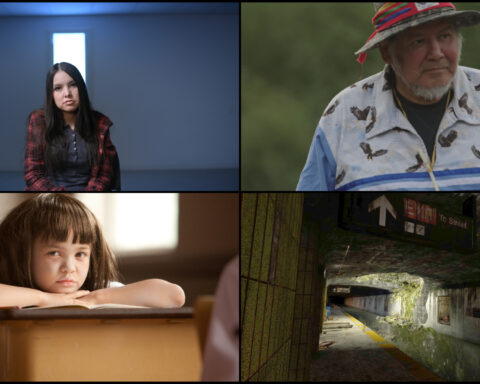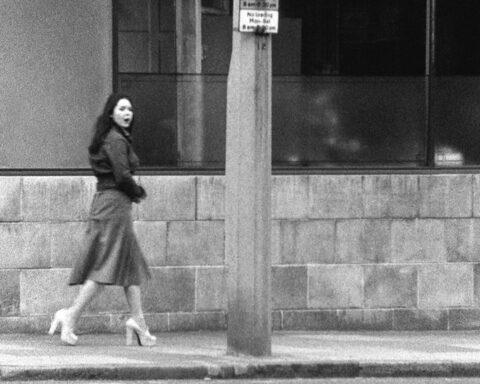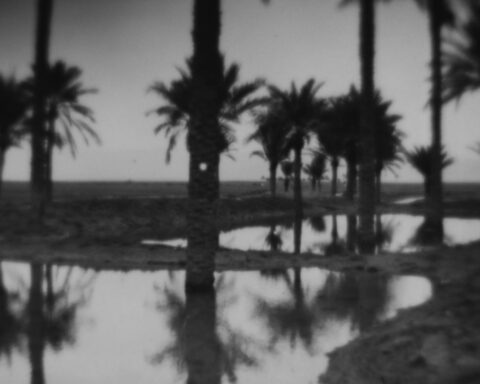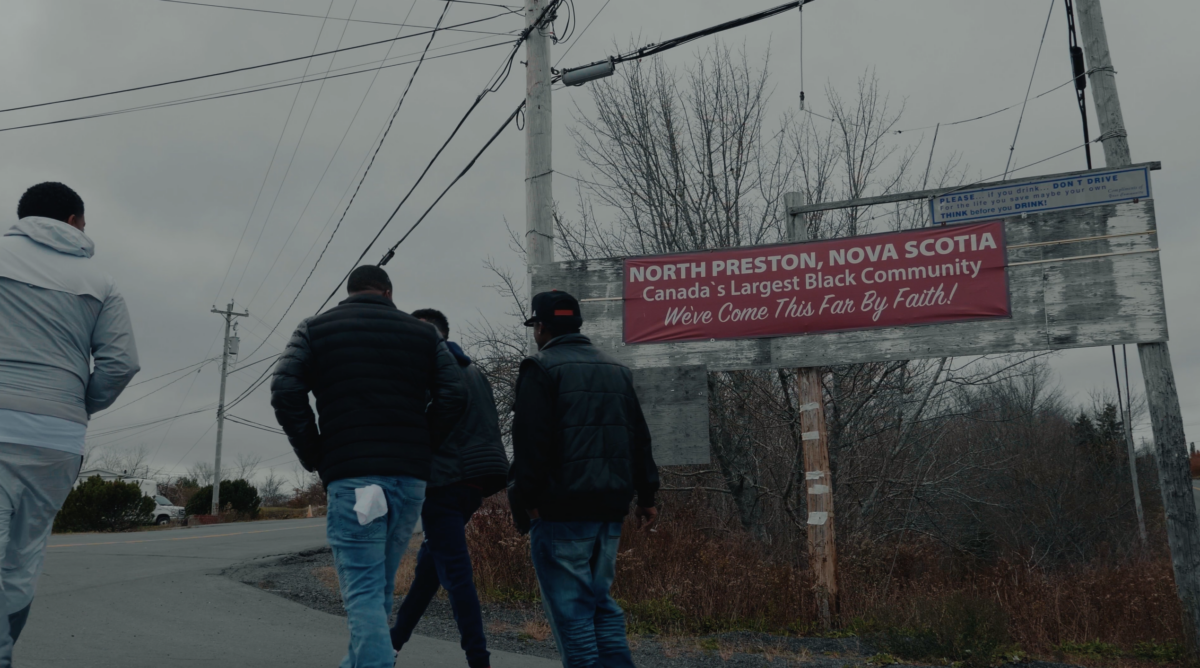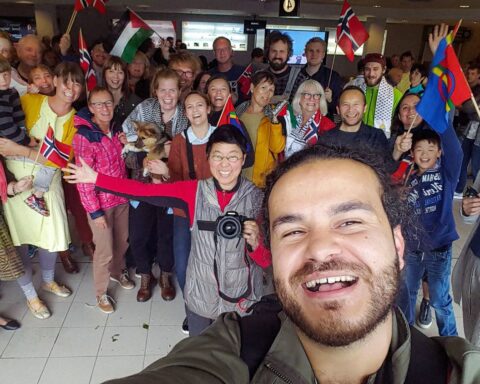Featuring 14 gallery exhibitions, 73 on-screen works, and eight live performances, Toronto’s Images Festival was ambitious as it always is. The 2019 edition featured ten days of innovative and independent works of art that were experimental and radical, yet intimate.
Images’ new artistic director Steffanie Ling set the tone for the 2019 festival on opening night by introducing the 10-day showcase as an opportunity to “explore the possibilities for artists, collectives, and people with the means and access to a community galvanized by the moving image to locate mutuality in a province that has swung to the right.”
In perfect accordance with that statement, Ling introduced the festival’s opening night selection, the 11-track music video album Software Garden by Rory Pilgram. The work explored how a music album can be used as a space to bring people together at a time when are tethered to manipulated realities and struggle to connect socially. Instead of extending the popular critique on technology as having led to growing polarities between people and their increased desire for isolation, Pilgram embraced technology and instead revealed its ability to foster connection, togetherness and feeling—and lots of collaboration. One of the project’s main collaborators was Carol R. Kallend, a disability-rights advocate in the UK, whose poetry and narration flowed throughout the film.
Rory Pilgrim, ‘Software Garden’ (2017) Excerpt. Courtesy the artist from aqnb.com on Vimeo.
Pilgram met Carol while working on another project, after which he proposed she join him on a musical endeavour about her love for technology and its relationship to her mental and physical states. Three weeks later, Kallend came to Pilgram with a poem called “Software Garden,” which led to the album of the same name.
Over two years, through installations and performance works that incorporate a variety of media, Pilgrim created spaces where people of diverse backgrounds could come together and develop new forms of understanding and caretaking. Those spaces, experiences, and collaborations became the content of the videos and prompted a constellation of other elements, including performances and participatory workshops working in collaboration with choreographer, artist, and performer Casper-Malte Augusta.
At the Q&A after the screening, Pilgrim said, “For me, the screen is just this incredible vessel or membrane to reach out, and however problematic it is, the conversations me and Carol have is how to make it more humane. How to get it touched; how to liberate touch.” Beautifully constructed and playful, vulnerable and intimate, daring and directive, the work was confusing, optimistic, democratic and easily accessible. It made one see that something need not be theoretically dense or intense to be radical or to simply bring joy.
A world of performance and magic that is still close to home appeared in Images’ shorts programme Domestic Cinema, which lay somewhere between fiction and non-fiction. This programme featured a half-dozen curated shorts that presented the domestic as a “playground for identities to flourish, blush, retreat or trumpet” rather than as a site of psychoanalysis and nostalgia, specifically in the lives of diasporic or marginalized people. Flowing in and out of narrative and documentary conventions was Charlotte Zhang’s The Lining_, which was a non-linear experimental portrait of love and quiet sadness. The film invited us into intimately performed scenes of calm and controlled banter between the family, friends, and lovers of a Los Angeles teen. Much of the film centered on her relationship with her mother, who frequently braided her daughter’s hair as they discussed love and friendship. Unapologetically intimate and in full embrace of the domestic, Zhang created a familiar representation imbued with poetic tropes and setups.
Five Movements from Lily Jue Sheng on Vimeo.
Five Movements, directed by Lily Jue Sheng, presented the domestic space as a synthetic environment for bodies to navigate. This cinematic diary interpreted the Chinese system of energies known as Wu Xing, which roughly signified the five dominant kinds of chi. Five Movements followed two nameless, unidentified characters as they explored phantasmal interiors and exteriors that were merely domestic spaces transformed through colour, composition, effects, lighting, and mood. Slowly-paced and without clear intentions, its 35-minute duration might be an exercise in patience for some viewers.
Payal Kapadia’s And What is the Summer Saying? presented a mystical and poetic cinematic experience about a Kondwall village, its inhabitants and the surrounding flora and fauna. Kapadia’s gently swaying camera roamed through the jungle and around the houses in the villages in search of intimate stories and secrets. Wood fires illuminated humble interiors in moonlit shots, while scenes during the daytime appeared in majestic black and white. With long meditative shots, interrupted with poetic excerpts and secrets being whispered by women of the village, And What is the Summer Saying? is a pure filmic experience in which one became mesmerized as if in a dream state.
And What is the Summer Saying (Trailer) from Payal Kapadia on Vimeo.
Similarly dream-like was Gary, Simon Mercer’s latest doc which was co-presented by POV. Featuring an eccentric cast of locals, Mercer composed a fever dream of a portrait of music producer turned filmmaker Gary Davis. A key figure in the evolution of Miami booty bass, Gary walked away from an early recording success in New York City to reinvent himself as a filmmaker in Florida, writing and directing over 40 feature length kung-fu, zombie, and blaxploitation movies. The film had no particular structure and narrative, and simply talked to Gary and the people he’s crossed paths with along his journey. No matter who Mercer talked to, everyone mentioned Gary’s determination, magic, and good spirit. Mercer jumped back and forth from one person to another, but always came back to Gary in his home or overgrown garden where we got to know the eccentric character he is at a closer level.
At one point in the film, Mercer, talking about himself in third person, said, “His big thing is taking nothing and out of that nothing creating something. That’s magic.” While the film is heavy on talking heads, Mercer offset convention using footage from Davis’ films and by maneuvering between characters and refusing to commit to a linear narrative. Mercer transformed Gary’s story into a dream-like journey that somehow made sense no matter how scattered it was.
Images also co-presented a multitude of off-screen work in galleries and spaces across the city. Sarah Pupo’s intuitive and fluid exhibition_ burning through the body_, inspired by the poem “KO” by Kristin Eiriksdottir, bridged watercolour paintings and lo-fi animation. Pupo created work that foregrounded intuition, process and ritual. It was non-radical and non-intellectual but completely embodied “acts of love and feeling,” as Pupo said in her artist talk. It’s quite effective.
Having her debut solo exhibition One of These Things is Not Like The Other at Aspace Gallery, Pamila Matharu explored the politics of archives, decolonial aesthetics, and self-preservation. Giving a small tour to a group of artists, Matharu said “with this show, I’m going for the jugular on the role of the critics and art institutions.” The exhibition, comprised of two installations, began with an experimental documentary, stuck between an archive and an aesthetic. The film was a collage of found footage from the early 1990s that conveyed the temporarily increased visibility that artists of color were provided in major art spaces and media outlets during the prime of multiculturalist policy in Canada. Secondly, in an adjacent room and in collaboration with Sister Co-register, was a multimedia installation that proposed alternative modes of belongings and acted as a container of collaborative care. Through these two works of resistance through presence, Matharu explored questions of survival and erasure in archives.
In the single-channel video installation Sirenomelia, Emilija Škarnulytė presented a fictional meditation in which a woman born with Sirenomelia, the so-called mermaid syndrome, investigated a Cold War Arctic submarine base. The film, which featured Škarnulytė herself in a mermaid’s tail, escorted us through the empty, submerged bays and exposed a future in which relations between humans and nonhumans had been transformed; a future of earthly coexistence.
Video Art Visions: Sirenomelia – NOWNESS from NOWNESS on Vimeo.
Images’ closed with a terrific program titled Outer Worlds, curated by Janine Marchessault. It featured five commissioned IMAX films by Canadian artists that reflected upon the necessity of intercultural and interspecies communication. They proposed different worlds of experience and immersion through a meeting with the lens. Leila Sujir’s Aerial, took us on a journey through a west coast rainforest through a drone-mounted camera that moved as rapidly as a hummingbird. Lisa Jackson’s Lichen was an otherworldly film that took a deep dive into lichen to reveal its hidden magical beauty. At 10 minutes long, Michael Snow’s Cityscape received the largest audience response in Outer Worlds. A dense, aggressive, optically spectacular visual experiment, the film bounced around Toronto’s skyline as if playing with a game. Cityscape’s sense of flight captured the magic of Images 2019: wherever you went and whatever you saw , you experienced a sense of commonality, community, mutuality, coexistence and complete ingenuity.

_Software Garden_
_Five Movements_




